Disclosure: This article contains affiliate links. We may earn a commission from purchases at no extra cost to you, which helps our travel content.
The moment I stepped into Lelydorp's central market, my senses were instantly transported back to my grandmother's kitchen in Yokohama. That familiar symphony of spices—ginger, galangal, and turmeric—dancing through the humid air. But here in Suriname's second-largest town, just 20 kilometers south of Paramaribo, those familiar Asian notes intertwine with distinctly Caribbean and South American elements, creating something altogether magical. As someone who grew up straddling Japanese and Filipino culinary traditions, I found myself instantly drawn to Suriname's remarkable food fusion—a living testament to the country's complex colonial history and diverse cultural tapestry.
The Historical Melting Pot of Lelydorp
Lelydorp isn't just a convenient stopover between Paramaribo and the interior—it's a microcosm of Suriname's extraordinary cultural diversity. Originally established as a Dutch agricultural settlement, the town transformed after the abolition of slavery when contract workers from Java (Indonesia) arrived to work the plantations. These Javanese immigrants brought their culinary traditions, which gradually melded with Creole techniques and indigenous ingredients.
Walking through town, the Indonesian influence is unmistakable—from the mosque that stands near a Lutheran church to the warung-style food stalls dotting the streets. Unlike the more tourist-oriented markets in Paramaribo, Lelydorp offers an authentic glimpse into everyday Surinamese life. I found myself jotting notes in my trusty waterproof notebook, which has survived countless tropical downpours during my market explorations across Southeast Asia.
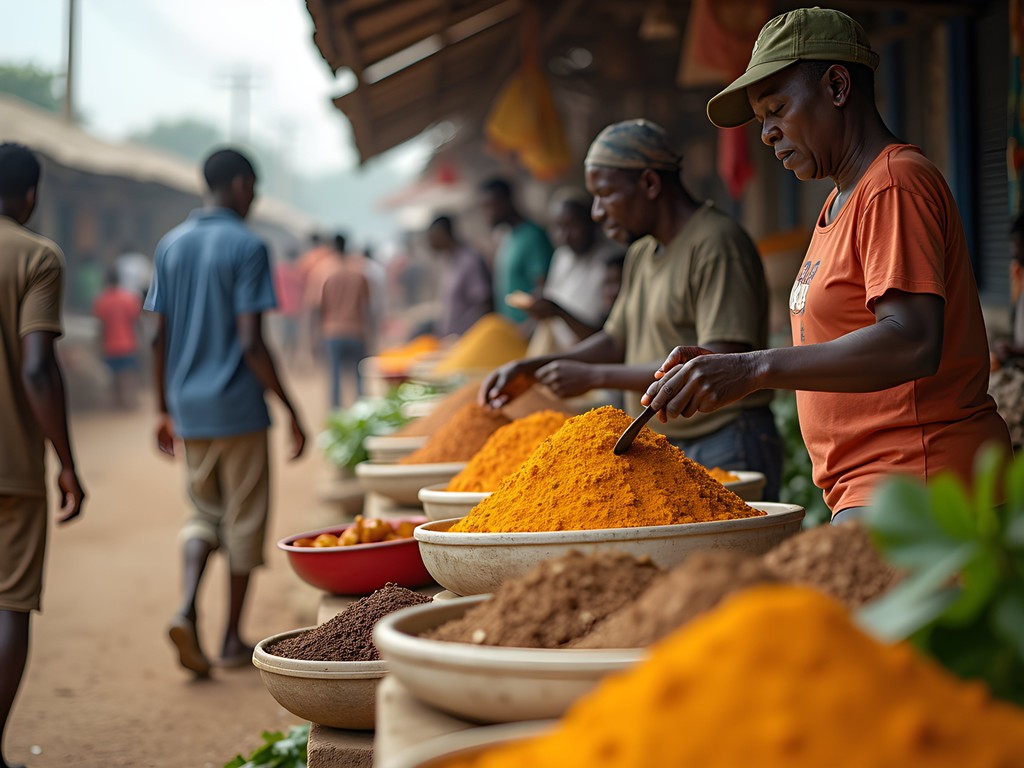
💡 Pro Tips
- Visit on Wednesday or Saturday mornings when the market is busiest and offerings are freshest
- Learn a few basic phrases in Dutch or Sranan Tongo to connect with vendors
- Bring small denominations of Surinamese dollars as vendors rarely have change
Javanese-Creole Fusion: A Culinary Treasure Hunt
My first culinary discovery came at the recommendation of my guesthouse host—saoto soup, a Javanese chicken soup that's been adapted with local ingredients. Unlike its Indonesian counterpart, Surinamese saoto incorporates cassava and plantains alongside the traditional glass noodles and bean sprouts. The broth, fragrant with lemongrass and galangal, reminded me of my grandmother's medicinal broths, though with a distinctly Caribbean brightness.
As I wandered deeper into the market, I discovered bami, a noodle dish that perfectly exemplifies Suriname's cultural fusion. While clearly derived from Indonesian mie goreng, the Surinamese version incorporates techniques and ingredients from Chinese, Creole, and indigenous cooking traditions. One vendor laughed as I photographed her meticulous preparation, explaining that every family has their own secret recipe.
To capture these vibrant food scenes, I relied on my clip-on smartphone lenses, which allow me to get incredible close-up shots of cooking techniques and ingredients without carrying bulky camera equipment. The vendors seemed to appreciate my genuine interest in their culinary heritage rather than treating them as exotic curiosities.
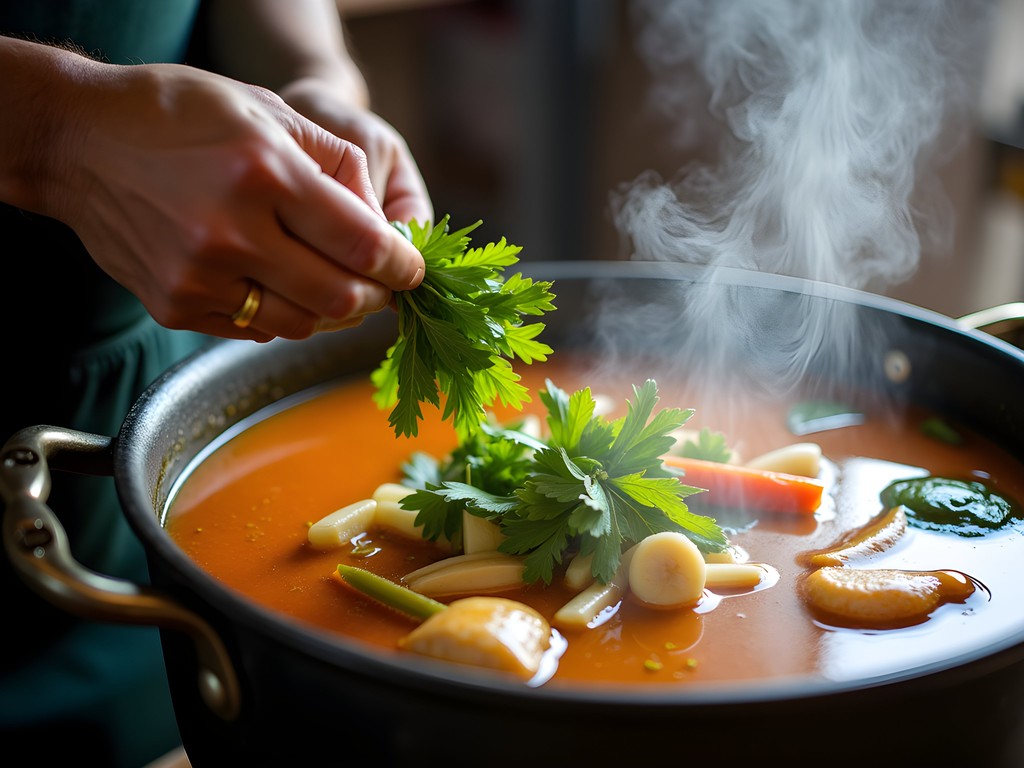
💡 Pro Tips
- Sample saoto soup from multiple vendors to taste the subtle variations
- Look for bami stalls where the noodles are being freshly prepared
- Ask about the spice level before ordering—Surinamese food can be surprisingly hot
Medicinal Herbs and Market Treasures
Perhaps the most fascinating aspect of Lelydorp's market is the medicinal herb section. My background in traditional Asian remedies immediately drew me to these stalls, where I found familiar ingredients used in completely novel ways. Vendors display bundles of bitter leaf (vernonia) alongside turmeric root and wiri wiri peppers, creating natural remedies that blend indigenous knowledge with Asian and African traditions.
One elderly Javanese woman, noticing my interest, invited me to smell various herbs while explaining their uses. She showed me how to prepare jamu—a traditional herbal tonic with roots in Indonesia but adapted with local Surinamese ingredients. The exchange reminded me of afternoons spent with my Japanese grandmother, carefully measuring herbs for seasonal remedies.
To document these traditional preparations, I use my pocket audio recorder to capture the vendors' explanations and stories. Recording these oral traditions feels like preserving vanishing knowledge—something I've become passionate about during my travels across regions with rich herbal traditions.
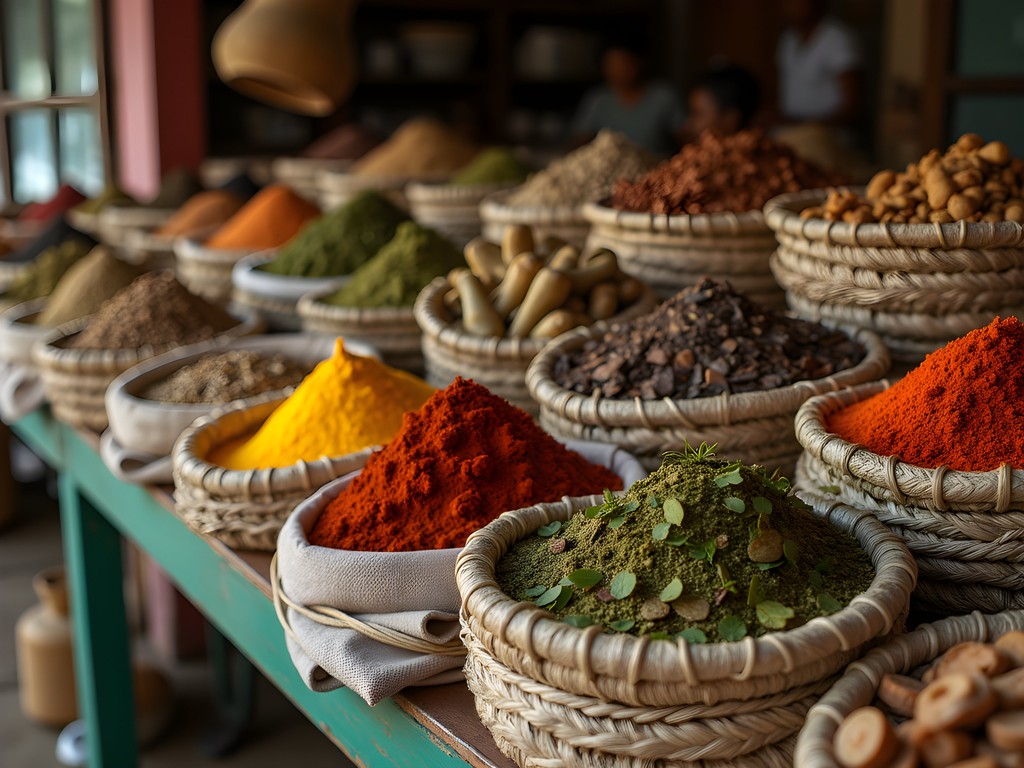
💡 Pro Tips
- Ask permission before photographing medicinal preparations as some are considered culturally sensitive
- Bring a small gift (like fruit) when engaging with elder knowledge keepers
- Take notes on preparation methods as vendors are usually happy to share their knowledge
Tasting Telenovie: The Ultimate Street Food Experience
No exploration of Lelydorp would be complete without sampling telenovie—grilled skewers that showcase the town's multicultural heritage. These meat skewers (typically chicken or beef) are marinated in a paste of galangal, tamarind, and Madame Jeanette peppers before being grilled over open flames. The result is tender, smoky meat with complex layers of flavor that reflect both Asian and Caribbean influences.
The best telenovie can be found at roadside stands that appear around sunset, often marked by nothing more than the aromatic smoke and clusters of locals. I followed my nose to a small stand operated by a Javanese-Creole family who've been perfecting their recipe for three generations. The patriarch proudly explained how each family member contributes to their signature marinade.
To enjoy these culinary adventures comfortably, I always bring my portable stool, which has proven invaluable for impromptu street food feasts across Southeast Asia and now in Suriname. It allows me to sit comfortably while chatting with vendors and fellow diners, often leading to the most memorable cultural exchanges.
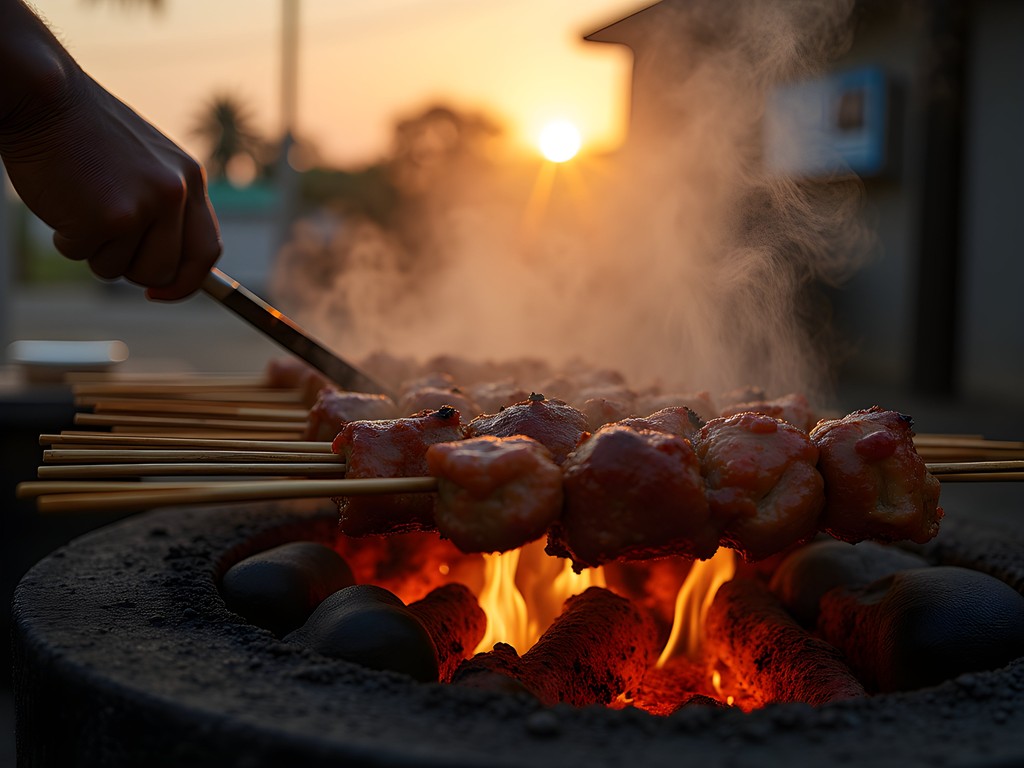
💡 Pro Tips
- Look for telenovie stands with the longest local lines
- Pair your skewers with cassava bread for an authentic experience
- Don't be afraid to request 'mild' if you're sensitive to spice—the default can be quite hot
Preserving Traditions Through Food
What struck me most about Lelydorp's food scene wasn't just the delicious flavors but how culinary traditions serve as living archives of Suriname's complex history. Each dish tells a story of migration, adaptation, and cultural resilience. The Javanese influence remains strong more than a century after the first immigrants arrived, yet it has evolved into something uniquely Surinamese.
On my last evening, I participated in a small cooking workshop organized by a local family. We prepared pom, a festive dish with Jewish roots that has become a national favorite. The main ingredient—pomtajer root—is indigenous to the region but prepared using techniques that blend European, African, and Asian influences. As we cooked, three generations shared stories of how recipes had changed over time while maintaining their cultural significance.
To preserve these recipes and stories, I use my recipe journal which has special pages for ingredients, methods, and the cultural context of each dish. It's become a treasured archive of my culinary adventures across continents and a way to honor the knowledge generously shared by locals.

💡 Pro Tips
- Ask about cooking workshops at your accommodation—many families offer informal lessons
- Learn about the cultural significance of ingredients, not just cooking techniques
- Support vendors who are maintaining traditional preparation methods
Final Thoughts
As I packed my bags to leave Lelydorp, my notebook filled with recipes and my camera roll bursting with images of market scenes, I reflected on how this unassuming town offers such profound insights into Suriname's cultural identity. The fusion cuisine I discovered here isn't some trendy culinary experiment but rather a living testament to centuries of migration, adaptation, and resilience.
For solo travelers willing to venture beyond Paramaribo, Lelydorp offers an authentic culinary journey that connects you directly with Suriname's remarkable diversity. The town may lack the polished tourist infrastructure of the capital, but that's precisely its charm—here, food becomes your entry point to genuine cultural exchange.
As someone who has always used traditional markets as my compass for understanding new places, I found Lelydorp's culinary landscape particularly moving. It reminded me that our food traditions—whether my grandmother's Japanese remedies or a Surinamese family's telenovie recipe—are precious cultural artifacts worth preserving. When you visit, come hungry not just for flavors but for the stories behind each dish. They'll stay with you long after the taste has faded.
✨ Key Takeaways
- Lelydorp offers authentic Javanese-Creole fusion cuisine that reflects Suriname's diverse cultural heritage
- The central market and evening street food stalls provide the best culinary experiences
- Learning about medicinal herbs and traditional cooking techniques offers deeper cultural insights
- Food serves as a living archive of Suriname's complex colonial history and cultural resilience
📋 Practical Information
Best Time to Visit
year-round, though December-April has less rainfall
Budget Estimate
$30-50 USD per day including accommodation and food
Recommended Duration
2-3 days
Difficulty Level
Intermediate


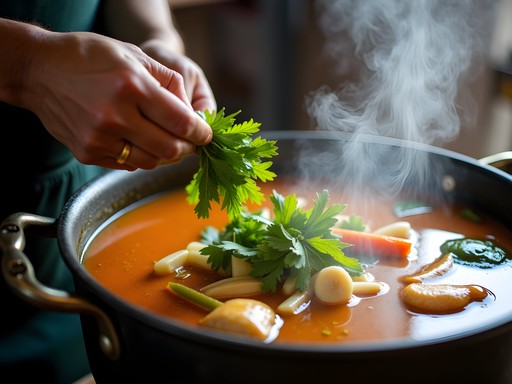






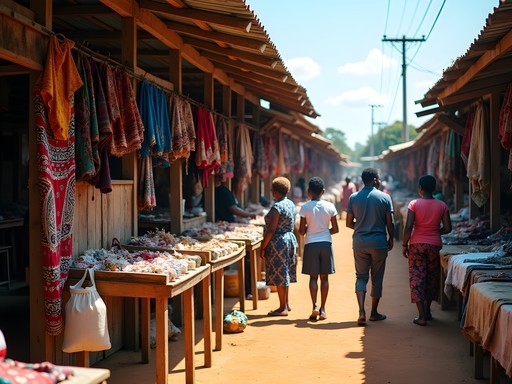
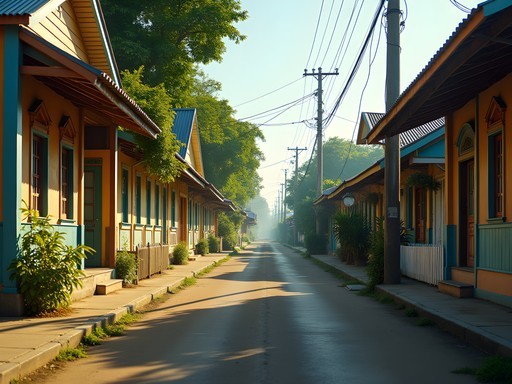
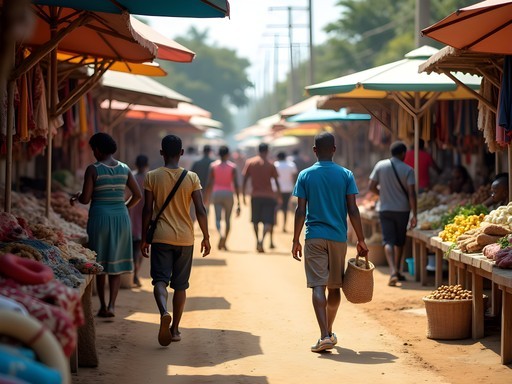

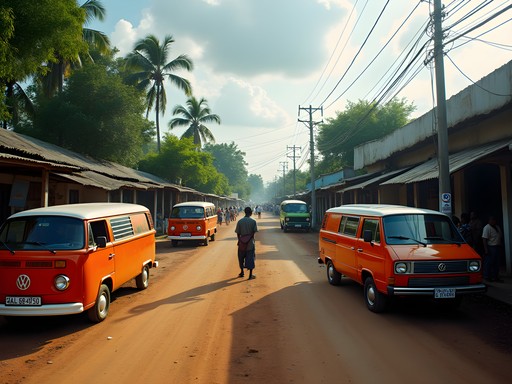

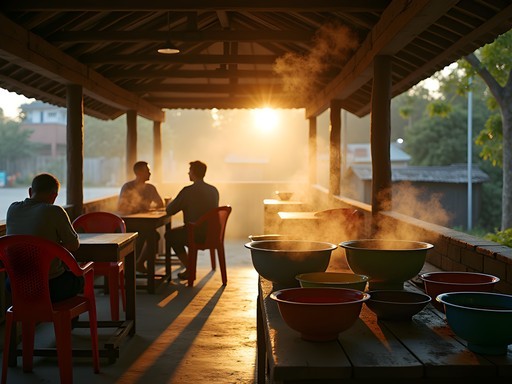
Comments
travelclimber
What exactly is Telenovie? You mentioned it's the ultimate street food but I'm curious about what's in it?
Nicholas Ramos
Great question! Telenovie is a street food that perfectly represents the fusion - it's seasoned rice with vegetables and protein (usually chicken or fish) wrapped in banana leaf, then grilled. The Javanese influence comes through in the spices (lemongrass, galangal, turmeric) while the Creole elements show up in the hot peppers and cooking technique. What makes it special is each family has their own recipe!
dreamperson
Never even heard of Lelydorp before but now I NEED to go! Adding to my bucket list!
George Hayes
This brings back memories! We visited Lelydorp with our kids last year and they still talk about the Telenovie street food. My 10-year-old became obsessed with those little banana leaf packages. We actually took a cooking class with a local family who showed us how to make the peanut sauce from scratch - game changer! The kids were fascinated by how the different cultural influences came together. If you're traveling with family, I highly recommend the morning market when it's less crowded and vendors have more time to chat and explain their specialties.
greenking9015
Do you remember the name of the cooking class? Would love to do that with my family!
George Hayes
It was with a lady named Mrs. Soekhai - our guesthouse arranged it for us. I don't think she has a website, but most accommodations in Lelydorp can connect you with local cooking lessons!
cooladventurer
Your photos are making me hungry! Those market colors are incredible!
explorewalker
This sounds amazing! What's the best way to get to these markets from Paramaribo? Is there public transportation or should I hire a driver?
Nicholas Ramos
Thanks for asking! There are minibuses that run regularly between Paramaribo and Lelydorp - they're cheap and frequent (about every 30 minutes). Just go to the central bus station in Paramaribo and look for the Lelydorp sign. The ride takes about 25 minutes. Taxis are also available but much pricier.
explorewalker
Perfect, thanks! I'm all about local transport experiences.
Sophia Gomez
Nicholas, this is such a beautiful portrait of Lelydorp's food scene! I visited Suriname last year but completely missed this gem. The way you described that blend of Javanese and Creole influences has me planning a return trip. I found that having a good food dictionary really helped me identify unusual ingredients in markets like these. Did you find any particular spice blend that was unique to the region? I'm always collecting cooking souvenirs from my travels!
springexplorer
Sophia, if you go back, don't miss the masala mix they sell at the corner stall with the blue awning! It's completely different from Indian masalas - has this unique Surinamese twist with local peppers.
coffeefan
Your photos are making me hungry! That market looks incredible!
beachphotographer
Those spices sound amazing! Is it possible to bring some back to the US or are there restrictions?
Sophia Gomez
I've brought back dried spices from other countries before! Just make sure they're properly sealed and declared at customs. Fresh items are usually a no-go though.
beachphotographer
Thanks for the tip! I'm dying to recreate some of these flavors at home.
springexplorer
This post brought back so many memories! I visited Lelydorp last year and was blown away by the Javanese-Creole fusion. That Telenovie street food you mentioned was INCREDIBLE - I still dream about those flavors! Did you try the pom? It's this amazing Surinamese dish with chicken and taro root that I couldn't get enough of. The markets there have such a different vibe than anywhere else I've been in South America.
Sophia Gomez
I'm heading to Suriname next month and definitely adding Lelydorp to my itinerary now! @springexplorer did you find it easy to navigate the market with English or should I learn some basic phrases?
springexplorer
Most vendors knew some English, but learning a few Sranan Tongo phrases really helped break the ice! 'Fa waka' (how are you) and 'poti wan moro' (a little more) came in handy when ordering food. The locals really appreciated the effort!
tripbackpacker
OMG this post is EXACTLY what I needed!!! Heading to Suriname in December and food is my absolute priority when traveling! Those market photos have me DROOLING! Can't wait to try everything you mentioned!!! 😍🍲🌶️
beachninja
Make sure you try the baka bana (fried plantains) too - not mentioned in the post but they're amazing with peanut sauce!
tripbackpacker
Thanks for the tip! Adding it to my food bucket list! 🍌
Venture X
Premium card with 2X miles, $300 travel credit, Priority Pass